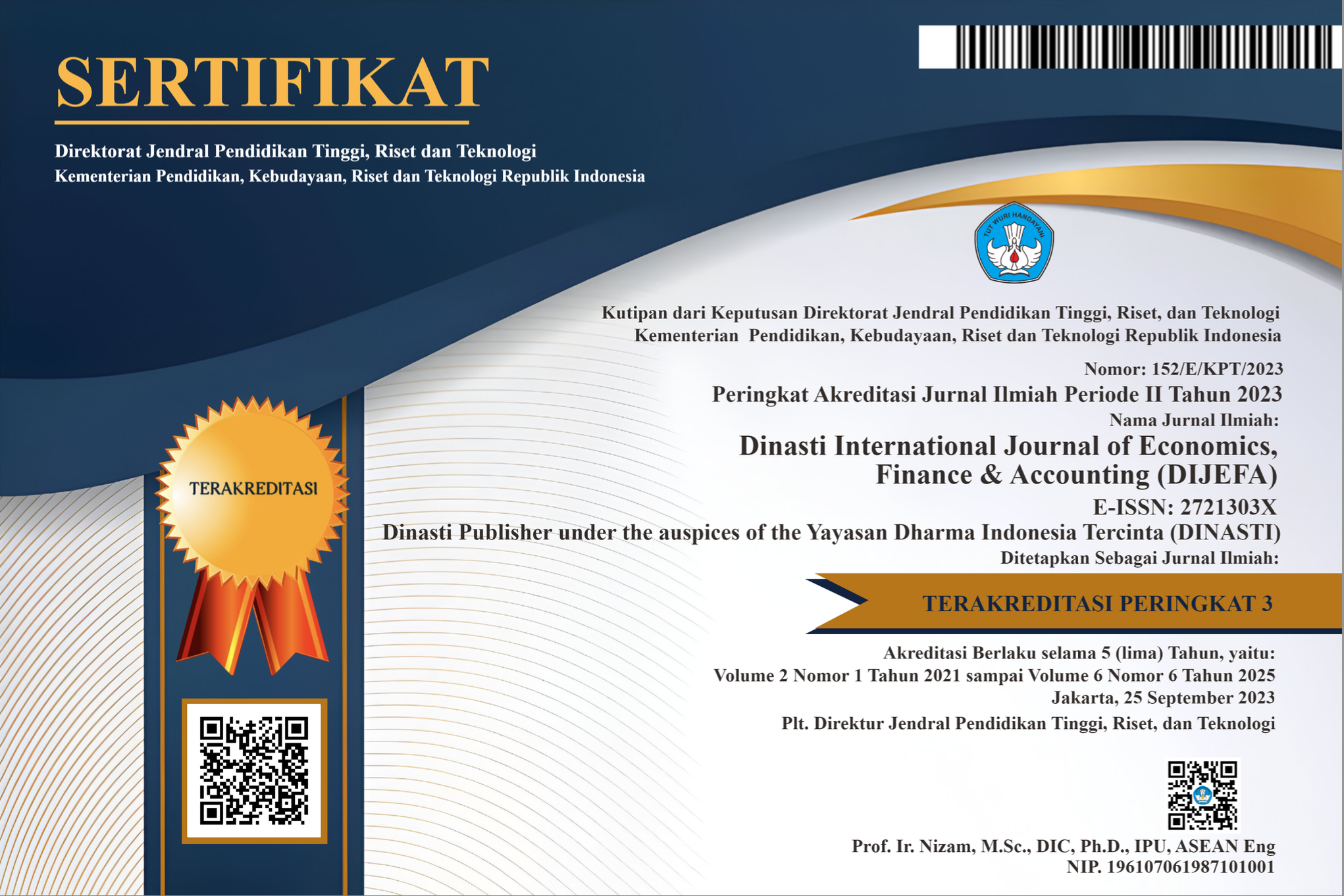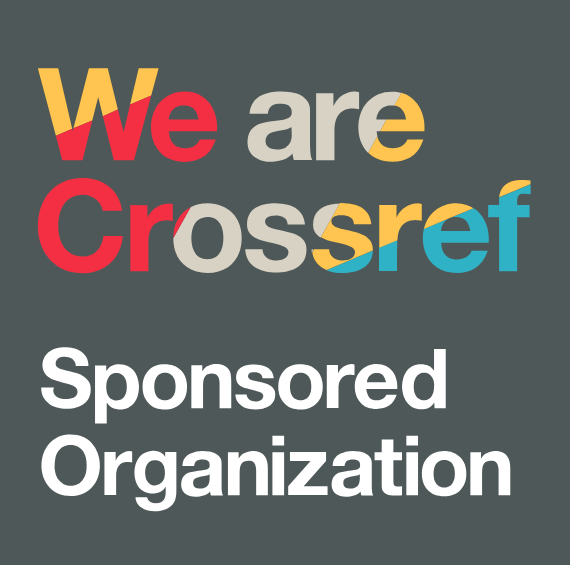Increasing The Role Of Rail-Based Public Transportation Through Improving Services And Developing T.O.D Area To Reduce Congress In Jakarta
DOI:
https://doi.org/10.38035/dijefa.v5i1.2457Keywords:
Service, Preferences, Loyalty, Transit-oriented development, Railways, Intent to buyAbstract
Abstract: The problems that cause public transportation are less desirable because the railway network is still very limited, public transportation services still need to be improved, full integration has not been realized and the development of Transit Oriented Development cannot be implemented. The purpose of this study was to determine whether the service model and public policy were successful, therefore the study used variables, namely; Perceived Quality; Trust; Passenger Satisfaction; Perceived Value; Passenger Preference; Passenger Loyalty, Behavior Intention to Purchase, and Transit Oriented Development as moderation and Passenger preference as intervening variables. Data analysis methods in this study include Importance and Performance Analysis (IPA), and Structural Equation Model (SEM) with the help of the SMART PLS 4 program and this study used a sample of 400 respondents, namely train users. Based on the results of the analysis Perceived quality, Passenger satisfaction, Trust, Passenger preference, and Passenger loyalty can have a positive and significant influence on behavior intention to purchase but Perceived value does not have a significant influence on the development of transit-oriented development can have a significant influence on loyalty and behavior intention to purchase. In Important performance analysis to improve service performance, namely unhindered train travel, high reliability, integrated and single ticket system.
References
Amanda, M. (2021). Optimization of River Transport Services Using the Minimum Transportation Standard Reference to Improve Community Satisfaction. KnE Social Sciences, 2020(Iwpospa), 216–223. https://doi.org/10.18502/kss.v5i1.8284
Ashraf, S., Ilyas, R., Imtiaz, M., & Ahmad, S. (2018). Impact of service quality, corporate image and perceived value on brand loyalty with presence and absence of customer satisfaction: A study of four service sectors of Pakistan. International Journal of Academic Research in Business and Social Sciences, 8(2), 452–474.
Badan Pusat Statistik. (2020). Hasil Sensus Penduduk 2020 - DKI Jakarta. Sensus Penduduk 2020, 6(5), 1–18.
Bamwesigye, D., & Hlavackova, P. (2019). Analysis of sustainable transport for smart cities. Sustainability, 11(7), 2140.
Berawi, M. A., Saroji, G., Iskandar, F. A., Ibrahim, B. E., Miraj, P., & Sari, M. (2020). Optimizing land use allocation of transit-oriented development (TOD) to generate maximum ridership. Sustainability (Switzerland), 12(9), 1–20. https://doi.org/10.3390/su12093798
Brohi, S., Kalwar, S., Memon, I. A., & Ghaffar, A. (2021). Using the Theory of Planned Behavior to Identify the Behavioral Intention to use Public Transportation Service: The Case Study of Karachi Circular Railway. International Journal on Emerging Technologies, 12(1), 317–322. www.researchtrend.net
Cakici, A. C., Akgunduz, Y., & Yildirim, O. (2019). The impact of perceived price justice and satisfaction on loyalty: the mediating effect of revisit intention. Tourism Review, 74(3), 443–462.
Chatzoglou, P., Chatzoudes, D., Savvidou, A., Fotiadis, T., & Delias, P. (2022). Factors affecting repurchase intentions in retail shopping: An empirical study. Heliyon, 8(9).
Chen, S.-C., & Lin, C.-P. (2019). Understanding the effect of social media marketing activities: The mediation of social identification, perceived value, and satisfaction. Technological Forecasting and Social Change, 140, 22–32.
Cheng, C. C., Chiu, S., Hu, H., & Chang, Y. (2011). A study on exploring the relationship between customer satisfaction and loyalty in the fast food industry?: With relationship inertia as a mediator. 5(13), 5118–5126. https://doi.org/10.5897/AJBM10.870
Chinomona, R., & Sandada, M. (2013). Customer Satisfaction , Trust and Loyalty as Predictors of Customer Intention to Re-Purchase South African Retailing Industry. 4(14), 437–446. https://doi.org/10.5901/mjss.2013.v4n14p437
Colquitt, J. A., & Zapata-phelan, C. P. (2007). Trends In Theory Building And Theory Testing: A Five-Decade Study Of The Academy Of Management Journal. 50(6), 1281–1303.
Dam, S. M., & Dam, T. C. (2021). Relationships between Service Quality, Brand Image, Customer Satisfaction, and Customer Loyalty. Journal of Asian Finance, Economics and Business, 8(3), 585–593. https://doi.org/10.13106/jafeb.2021.vol8.no3.0585
de Oña, J., de Oña, R., Eboli, L., Forciniti, C., & Mazzulla, G. (2016). Transit passengers’ behavioural intentions: the influence of service quality and customer satisfaction. Transportmetrica A: Transport Science, 12(5), 385–412. https://doi.org/10.1080/23249935.2016.1146365
Dell’Olio, L., Ibeas, A., Dominguez, A., & Gonzalez, F. (2012). Passenger preference analysis: light rail transit or bus versus car. Transport, 27(3), 276–285.
Deng, Z., Lu, Y., Wei, K. K., & Zhang, J. (2010). Understanding customer satisfaction and loyalty: An empirical study of mobile instant messages in China. International Journal of Information Management, 30(4), 289–300.
Effendi, H., & Yenita, Y. (2023). Faktor penentu loyalitas penumpang kereta api antarkota lintas Pulau Jawa. Jurnal Manajemen Maranatha, 22(2), 169–182. https://doi.org/10.28932/jmm.v22i2.6277
Fong, S. K., Char, A. K., Tanakinjal, G. H., Boniface, B., Gukang, A. S., & Lubang, L. A. (2023). Price, Service Quality, Customer Trust And Safety Influence Towards Customer Satisfaction On Online Transportation. Labuan Bulletin of International Business and Finance (LBIBF), 21(1), 78–90.
Fu, X., & Juan, Z. (2017). Understanding public transit use behavior: integration of the theory of planned behavior and the customer satisfaction theory. Transportation, 44(5), 1021–1042.
Gao, Y., & Zhu, J. (2022). Characteristics , Impacts and Trends of Urban Transportation. 1168–1182.
Ghozali, I. (2021). Partial least squares (Konsep, teknik dan aplikasi menggunakan program SmartPLS 3.2.9) untuk penelitian empiris (3rd ed.). Badan Penerbit Universitas Diponegoro.
Ghozali, I., & Latan, H. (2015). Partial Least Squares (konsep, teknik dan aplikasi menggunakan program SmartPLS 3.0) edisi 2 (Dedi (ed.); 2nd ed.). Univesitas Diponogoro Semarang.
Gul, R. (2014). The relationship between reputation, customer satisfaction, trust, and loyalty. Journal of Public Administration and Governance, 4(3), 368–387.
Hakimi Ibrahim, A. N., & Borhan, M. N. (2020). The Interrelationship Between Perceived Quality, Perceived Value and User Satisfaction Towards Behavioral Intention in Public Transportation: A Review of the Evidence. International Journal on Advanced Science, Engineering and Information Technology, 10(5), 2048–2056. https://doi.org/10.18517/ijaseit.10.5.12818
Hakimi Ibrahim, A. N., Borhan, M. N., Mat Yazid, M. R., Rahmat, R. A., & Yukawa, S. (2021). Factors influencing passengers’ satisfaction with the light rail transit service in alpha cities: Evidence from Kuala Lumpur, Malaysia using structural equation modelling. 9(16). https://doi.org/10.3390/math9161954
Hallak, R., Assaker, G., & El-Haddad, R. (2018). Re-examining the relationships among perceived quality, value, satisfaction, and destination loyalty: A higher-order structural model. Journal of Vacation Marketing, 24(2), 118–135.
Halpern, N., Mwesiumo, D., Budd, T., Suau-Sanchez, P., & Bråthen, S. (2021). Segmentation of passenger preferences for using digital technologies at airports in Norway. Journal of Air Transport Management, 91, 102005.
Hatziioannidu, F., & Polydoropoulou, A. (2022). Identifying passenger preferences for alternative ferry transport hubs. Research in Transportation Economics, 101221.
He, S. Y., Tao, S., Hou, Y., & Jiang, W. (2018). Mass transit railway, transit-oriented development and spatial justice: The competition for prime residential locations in Hong Kong since the 1980s. Town Planning Review, 89(5), 467–493. https://doi.org/10.3828/tpr.2018.31
Hizam, S. M., Ahmed, W., Akter, H., & Sentosa, I. (2021). Understanding the public rail quality of service towards commuters’ loyalty behavior in Greater Kuala Lumpur. Transportation Research Procedia, 55, 370–377.
Irjayanti, A. D., Sari, D. W., & Rosida, I. (2021). Perilaku Pemilihan Moda Transportasi Pekerja Komuter: Studi Kasus Jabodetabek. Jurnal Ekonomi Dan Pembangunan Indonesia, 21(2), 125–147.
Kim, J.-H., & Park, J.-W. (2019). The effect of airport self-service characteristics on passengers’ perceived value, satisfaction, and behavioral intention: based on the SOR model. Sustainability, 11(19), 5352.
Kotler, P., Keller, K. L., Brady, M., Malcolm, G., & Hansen, T. (2016). Marketing Management. In Angewandte Chemie International Edition (Vol. 6, Issue 11).
Lai, W. T., & Chen, C. F. (2011). Behavioral intentions of public transit passengers-The roles of service quality, perceived value, satisfaction and involvement. Transport Policy, 18(2), 318–325. https://doi.org/10.1016/j.tranpol.2010.09.003
Lamour, Q., Morelli, A. M., & Marins, K. R. d. C. (2019). Improving walkability in a TOD context: Spatial strategies that enhance walking in the Belém neighbourhood, in São Paulo, Brazil. Case Studies on Transport Policy, 7(2), 280–292. https://doi.org/10.1016/j.cstp.2019.03.005
Leninkumar, V. (2017). The relationship between customer satisfaction and customer trust on customer loyalty. International Journal of Academic Research in Business and Social Sciences, 7(4), 450–465.
Machado-León, J. L., de Oña, R., Baouni, T., & de Oña, J. (2017). Railway transit services in Algiers: priority improvement actions based on users perceptions. Transport Policy, 53, 175–185.
Marina, S., Pasha, K., Ricardianto, P., Octora, T., Olfebri, O., Rahmawati, A., Sianturi, T., Wiguna, E., Sitorus, P., & Endri, E. (2023). Corporate image and service quality: Evidence from Indonesia Mass Rapid Transport. Uncertain Supply Chain Management, 11(3), 1265–1274.
Miao, M., Jalees, T., Zaman, S. I., Khan, S., Hanif, N. ul A., & Javed, M. K. (2022). The influence of e-customer satisfaction, e-trust and perceived value on consumer’s repurchase intention in B2C e-commerce segment. Asia Pacific Journal of Marketing and Logistics, 34(10), 2184–2206. https://doi.org/10.1108/APJML-03-2021-0221
Muskat, B., Hörtnagl, T., Prayag, G., & Wagner, S. (2019). Perceived quality, authenticity, and price in tourists’ dining experiences: Testing competing models of satisfaction and behavioral intentions. Journal of Vacation Marketing, 25(4), 480–498.
Pan, H., Li, J., Shen, Q., & Shi, C. (2017). What determines rail transit passenger volume? Implications for transit oriented development planning. Transportation Research Part D: Transport and Environment, 57, 52–63. https://doi.org/10.1016/j.trd.2017.09.016
Prameka, A. S., Do, B.-R., & Rofiq, A. (2017). How brand trust is influenced by perceived value and service quality: mediated by hotel customer satisfaction. APMBA (Asia Pacific Management and Business Application), 5(2), 73–88.
Rasoolimanesh, S. M., Dahalan, N., & Jaafar, M. (2016). Tourists’ perceived value and satisfaction in a community-based homestay in the Lenggong Valley World Heritage Site. Journal of Hospitality and Tourism Management, 26, 72–81.
Saleem, M. A., Zahra, S., & Yaseen, A. (2017). Asia Pacific Journal of Marketing and Logistics Impact of service quality and trust on repurchase intentions – the case of Pakistan airline industry Impact of service quality and trust on repurchase intentions – the case of Pakistan airline industry Sadaf. Asia Pacific Journal of Marketing and Logistics, 29(5), 1136–1159. https://doi.org/10.1108/APJML-10-2016-0192
Saxena, A. (2017). Literature Review on Customer Satisfaction. 03(670), 20–26.
Shen, W., Xiao, W., & Wang, X. (2016). Passenger satisfaction evaluation model for Urban rail transit: A structural equation modeling based on partial least squares. Transport Policy, 46, 20–31. https://doi.org/10.1016/j.tranpol.2015.10.006
Soltanpour, A., Mesbah, M., & Habibian, M. (2020). Customer satisfaction in urban rail: a study on transferability of structural equation models. Public Transport, 12(1), 123–146. https://doi.org/10.1007/S12469-019-00223-Y
Su, M., Luan, W., Yuan, L., Zhang, R., & Zhang, Z. (2019). Sustainability development of high-speed rail and airline—Understanding passengers’ preferences: A case study of the Beijing–Shanghai corridor. Sustainability, 11(5), 1352.
Tomtom Traffic Index. (2021). Traffic Index results 2018 - 2021. Www.Tomtom.Com, 21. https://www.tomtom.com/traffic-index/ranking/
Vanacore, A., Lanzotti, A., Percuoco, C., & Vitolo, B. (2021). Statistical modelling of comfort preferences and uncertainty in subjective evaluations of aircraft seat comfort. Congress of the International Ergonomics Association, 178–183.
Vicente, P., Sampaio, A., & Reis, E. (2020). Factors influencing passenger loyalty towards public transport services: Does public transport providers’ commitment to environmental sustainability matter? Case Studies on Transport Policy, 8(2), 627–638.
Wahyudi, S. (2019). Pengaruh Kepercayaan Terhadap Loyalitas Konsumen Yang Memunculkan Distrust. Sisi Lain Realita, 3(2), 100–112. https://doi.org/10.25299/sisilainrealita.2018.vol3(2).3721
Wang, Y., Zhang, Z., Zhu, M., & Wang, H. (2020). The Impact of Service Quality and Customer Satisfaction on Reuse Intention in Urban Rail Transit in Tianjin, China. SAGE Open, 10(1). https://doi.org/10.1177/2158244019898803
Wonglakorn, N., Ratanavaraha, V., Karoonsoontawong, A., & Jomnonkwao, S. (2021). Exploring passenger loyalty and related factors for urban railways in Thailand. Sustainability (Switzerland), 13(10), 1–15. https://doi.org/10.3390/su13105517
Zefreh, M. M., Hussain, B., & Sipos, T. (2020). In-depth analysis and model development of passenger satisfaction with public transportation. KSCE Journal of Civil Engineering, 24(10), 3064–3073.
Zhang, C., Liu, Y., Lu, W., & Xiao, G. (2019). Evaluating passenger satisfaction index based on PLS-SEM model: Evidence from Chinese public transport service. Transportation Research Part A: Policy and Practice, 120(December 2017), 149–164. https://doi.org/10.1016/j.tra.2018.12.013
Zhao, L., & Shen, L. (2019). The impacts of rail transit on future urban land use development: A case study in Wuhan, China. Transport Policy, 81(November 2016), 396–405. https://doi.org/10.1016/j.tranpol.2018.05.004
Zheng, Z., Washington, S., Hyland, P., Sloan, K., & Liu, Y. (2016). Preference heterogeneity in mode choice based on a nationwide survey with a focus on urban rail. Transportation Research Part A: Policy and Practice, 91, 178–194. https://doi.org/10.1016/j.tra.2016.06.032
Zulvani, S. B. E., Pardiman, & Millaningtyas, R. (2022). Preferensi Masyarakat dalam Memilih Alat Transportasi Kereta Api Indonesia. E – Jurnal Riset Manajemen Prodi Manajemen, 11(15), 82–93. www.fe.unisma.ac.id
Downloads
Published
How to Cite
Issue
Section
License
Copyright (c) 2024 Soemino Eko Saputro, Edi Abdurachaman, Prasadja Ricardianto, Julison Arifin

This work is licensed under a Creative Commons Attribution 4.0 International License.
Authors who publish their manuscripts in this journal agree to the following conditions:
- The copyright on each article belongs to the author(s).
- The author acknowledges that the Dinasti International Journal of Economics, Finance & Accounting (DIJEFA) has the right to be the first to publish with a Creative Commons Attribution 4.0 International license (Attribution 4.0 International (CC BY 4.0).
- Authors can submit articles separately, arrange for the non-exclusive distribution of manuscripts that have been published in this journal into other versions (e.g., sent to the author's institutional repository, publication into books, etc.), by acknowledging that the manuscript has been published for the first time in the Dinasti International Journal of Economics, Finance & Accounting (DIJEFA).


























































